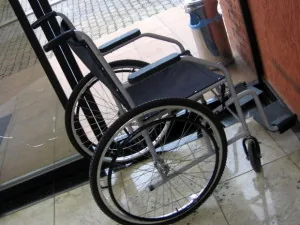Breaking a bone is always painful and includes inherent recovery time, but trimalleolar ankle fractures present special challenges – in this post we will look at who is at risk for trimalleolar ankle fractures and examine the treatment protocol. An ankle can be fractured while participating in high impact sports, but they are just as commonly caused by simple falls. The type of treatment recommended and the estimated length of recovery are both dependent on the type and severity of the fracture. A trimalleolar fracture is severe and will disable a person for an extended length of time. A formal physical therapy regimen is crucial to achieve the best recovery possible from such an injury.
Some facts regarding trimalleolar fractures:
- Women over 60 years of age are the most common group to experience these injuries
- Surgery is required to set the bones after a trimalleolar fracture
- The injured party must not bear weight on the affected ankle for 2-4 months
- Premature weight-bearing on the injury can lead to early onset arthritis in the foot/ankle
The treatment of a trimalleolar fracture begins with immediate stabilization. Surgery is necessary to fix the fracture sites, meaning setting the bones back into their normal alignment and placement of hardware to hold them in place during the healing process. After surgery, the patient will be required to stay completely non-weight bearing for two to three months. Attempting to bear weight on the injured ankle could disrupt the placement of the surgically repaired bones, and any such misalignment could put the patient at high risk for early onset arthritis in the area.
Trimalleolar Fractures are frequently prone to significant swelling in the foot/ankle area, which can delay the surgical fixation since severe swelling makes surgery more difficult to perform, increase the infection risk, and delay post-surgical healing.
Due to the requirement of no weight-bearing, muscle atrophy is all but inevitable and often leads to an extended period of rehabilitation – frequently over a year. The transition to full weight bearing often leaves the patient fearful and a good physical therapist will be of great assistance during this transition. The patient will likely feel pain, numbness/tingling and great instability when he or she first bears weight on the affected ankle.
Trimalleolar ankle fractures are terrible injuries that affect the patient’s life dramatically for at least several months to over a year.
I’m Ed Smith, an Elk Grove personal injury attorney with the most comprehensive and informative accident site on the web, www.autoaccident.com.
If you our someone you know has suffered an ankle fracture due to an automobile accident, please give me a call at 916.921.6400 for free and friendly advise.
Be sure to read our reviews at Yelp! and Avvo.

